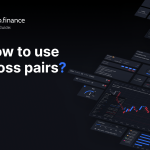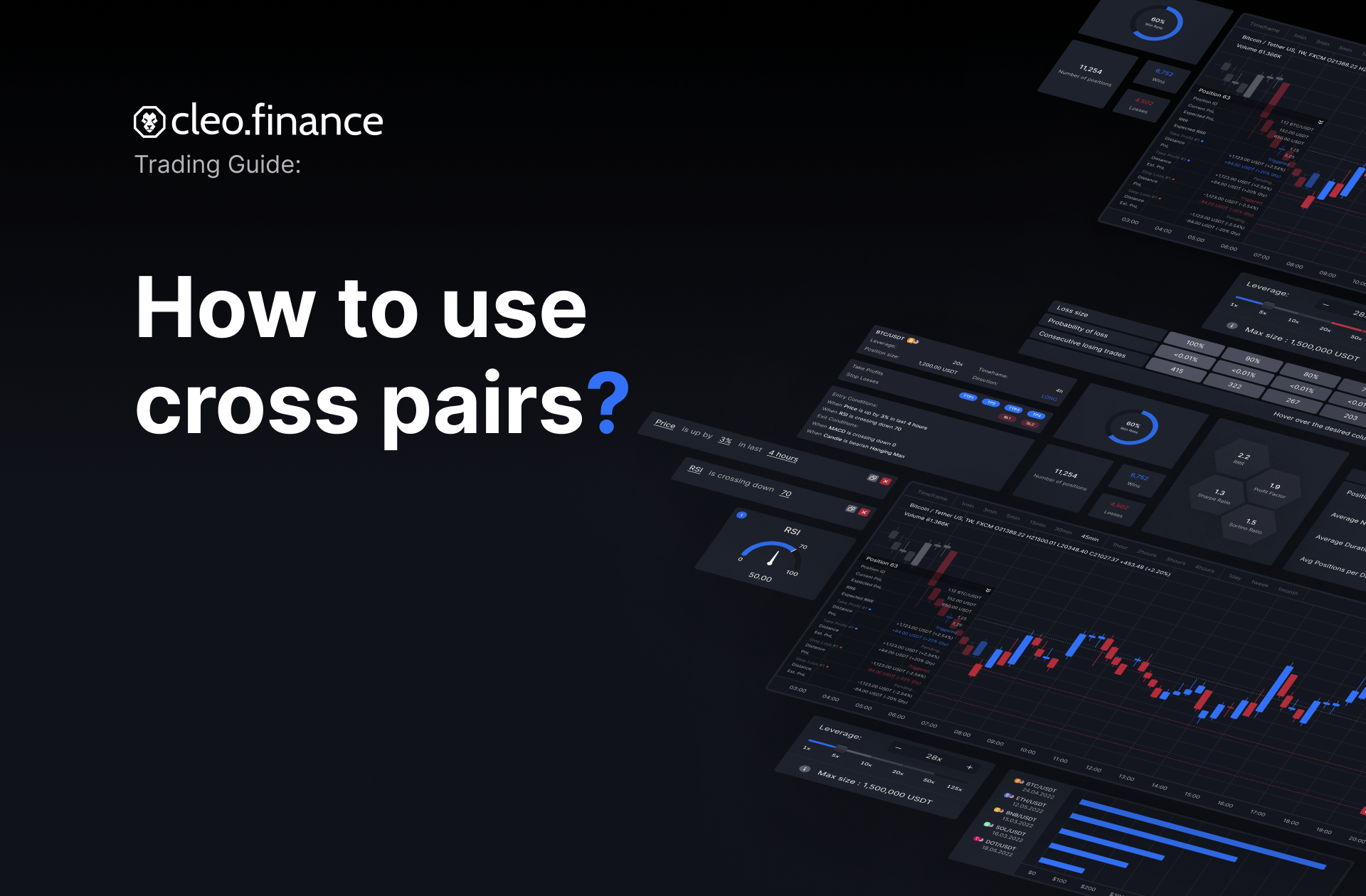Trading Smarter: Analyzing Cross Currency Pairs to Identify Profitable Trades4 min read
When trading forex or cryptocurrencies, it can be important to have a thorough understanding of how different assets relate to one another. It can make things much easier if you’re wondering where to look for the next trade.
One way to gain insight into these relationships is by analyzing cross pairs, which are currency pairs that do not include the US dollar as one of the currencies.
In this article, we’ll explore how to use cross currency pairs to determine which assets to trade based on their relative strength. Whether you’re a novice trader just starting out or an experienced professional looking to refine your trading strategy, understanding how to use cross-pairs can help you make more informed and profitable trading decisions.
Table of Contents
Why look at cross currency pairs in the first place?
Cross pair analysis can provide valuable insights into the relative strength of different assets. By examining the relationship between two currencies or cryptocurrencies, traders can identify opportunities for more profitable trades with optimized risk-to-reward ratios. This approach can be particularly useful if you’re analyzing currency indices – such as US Dollar Index, Euro Index, or Japanese Yen index. If you see a potential reversal or trend continuation on these indices, looking at cross pairs can help you determine which trade can be the higher beta play.
With all the focus on inflation and liquidity lately correlations with Bitcoin as Global Liquidity Barometer are being underlined again.
However, while trading cross pairs can offer important benefits, to some traders it can also feel like adding complexity to their trading. Especially if the cross pair doesn’t seem to have a clear trend or is not at important price areas with the potential of reversal.
What does a “higher beta trade” mean?
Traditionally, in finance beta is a measure of an asset’s volatility in relation to the overall market. A higher beta means that an asset is more volatile than the market, while a lower beta indicates less volatility.
When someone refers to a “higher beta play” or “higher beta trade” in the context of forex trading, they are typically referring to a currency pair that is expected to experience larger price movements than another currency pair in response to a particular market event or economic data release. For example, if the US Dollar is expected to strengthen, one currency pair may be expected to experience a larger price decline than another. This currency pair with a larger expected price movement would be considered the “higher beta play” in this scenario.
Example of Forex higher beta trade analysis
Suppose your system indicates that the US Dollar is poised to strengthen, but you’re unsure whether to short the EURUSD or GBPUSD currency pairs. In this case, analyzing their cross currency pair, EURGBP, can provide additional insights. Is there a clear trend in the EURGBP pair? Is it currently at an important price level, such as a range high or low, or is there any indication of a potential price reversal or trend continuation?
By answering these questions, you can better determine which of the two pairs (EURUSD or GBPUSD) is likely to be the higher beta play – in other words, which one will likely see a greater decline if the US Dollar strengthens.
The most correlated forex pairs are:
EURUSD and GBPUSD,
AUDUSD and NZDUSD
USDCHF and EURUSD
USDCAD and USDJPY
GBPJPY and EURJPY
EURUSD and USDJPY
Example of cryptocurrency higher beta trade analysis
Similarly, in cryptocurrency trading, traders can use cross currency pairs to determine which digital asset to trade against the US dollar. For instance, if a trader believes that the US dollar is going to weaken, they may consider trading BTC/USD or ETH/USD. By analyzing the BTC/ETH cryptocurrency pair, they can determine which asset is stronger relative to the other. If the BTC/ETH pair is moving higher, it indicates that BTC is stronger than ETH, and therefore opening a long trade on BTC/USD may be a better option than trading ETH/USD.
Conclusion
Analyzing the correlations between major pairs and cross currency pairs can provide you with valuable insights. However, it’s important to avoid getting bogged down in analysis paralysis. If a cross currency pair analysis doesn’t provide a clear direction or any other actionable insights, it’s often best to simply focus on the asset where your system gave you the entry trade trigger.
You can do cross currency pair analysis, backtest your strategies, and trade automatically on our innovative trading platform cleo.finance.





